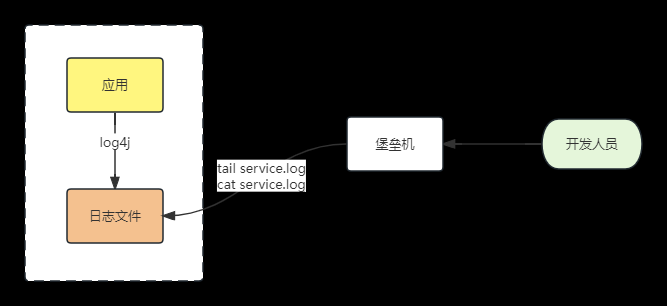前言
最近,开源了可商用的llama2,支持长度相比llama1的1024,拓展到了4096长度,然而,相比GPT-4、Claude-2等支持的长度,llama的长度外推显得尤为重要,本文记录了三种网络开源的RoPE改进方式及相关源码的阅读。
关于长度外推性:https://kexue.fm/archives/9431
关于RoPE:https://kexue.fm/archives/8265
1、线性插值法
论文:EXTENDING CONTEXT WINDOW OF LARGE LANGUAGE MODELS VIA POSITION INTERPOLATION
链接:https://arxiv.org/pdf/2306.15595.pdf
思想:不进行长度外推,而是直接缩小位置索引。即:将4096的位置编码通过线性插值法压缩到2048内,这样只需在少量的4096长度的数据上继续预训练,便可达到不错的效果。

源码阅读(附注释):
class LlamaLinearScaledRotaryEmbedding(torch.nn.Module):
def __init__(self, dim, max_position_embeddings=2048, base=10000, scale=1, device=None):
super().__init__()
# 相比RoPE增加scale参数
self.scale = scale
# inv_freq为基值向量
inv_freq = 1.0 / (base ** (torch.arange(0, dim, 2).float().to(device) / dim))
self.register_buffer("inv_freq", inv_freq)
# Build here to make `torch.jit.trace` work.
self.max_seq_len_cached = max_position_embeddings
# 构建max_seq_len_cached大小的张量t
t = torch.arange(self.max_seq_len_cached, device=self.inv_freq.device, dtype=self.inv_freq.dtype)
# 张量t归一化,RoPE没有这一步
t /= self.scale
# einsum计算频率矩阵
# 'i, j->i j’表示分别输入尺寸为[i]、[j]的向量,做笛卡尔运算得到尺寸为[i, j]的矩阵。
freqs = torch.einsum("i,j->ij", t, self.inv_freq)
# Different from paper, but it uses a different permutation in order to obtain the same calculation
# 在-1维做一次拷贝、拼接
emb = torch.cat((freqs, freqs), dim=-1)
dtype = torch.get_default_dtype()
# 注册为模型的缓冲区cos_cached和sin_cached
self.register_buffer("cos_cached", emb.cos()[None, None, :, :].to(dtype), persistent=False)
self.register_buffer("sin_cached", emb.sin()[None, None, :, :].to(dtype), persistent=False)
def forward(self, x, seq_len=None):
# x: [bs, num_attention_heads, seq_len, head_size]
# This `if` block is unlikely to be run after we build sin/cos in `__init__`. Keep the logic here just in case.
# seq_len为序列长度,seq_len大于max_seq_len_cached,则重新计算频率矩阵,并更新cos_cached和sin_cached的缓冲区
if seq_len > self.max_seq_len_cached:
self.max_seq_len_cached = seq_len
t = torch.arange(self.max_seq_len_cached, device=x.device, dtype=self.inv_freq.dtype)
t /= self.scale
freqs = torch.einsum("i,j->ij", t, self.inv_freq)
# Different from paper, but it uses a different permutation in order to obtain the same calculation
emb = torch.cat((freqs, freqs), dim=-1).to(x.device)
self.register_buffer("cos_cached", emb.cos()[None, None, :, :].to(x.dtype), persistent=False)
self.register_buffer("sin_cached", emb.sin()[None, None, :, :].to(x.dtype), persistent=False)
# 长度裁剪:返回cos_cached和sin_cached中与seq_len(序列长度)
return (
self.cos_cached[:, :, :seq_len, ...].to(dtype=x.dtype),
self.sin_cached[:, :, :seq_len, ...].to(dtype=x.dtype),
)
线性插值法的相关实验效果:https://lmsys.org/blog/2023-06-29-longchat/
2、NTK插值法
NTK插值改进llama中使用的RoPE插值方法,同样,对于RoPE代码改动更小,其他地方与线性插值法实现一致。
reddit原帖:NTK-Aware Scaled RoPE allows LLaMA models to have extended (8k+) context size without any fine-tuning and minimal perplexity degradation
链接:https://www.reddit.com/r/LocalLLaMA/comments/14lz7j5/ntkaware_scaled_rope_allows_llama_models_to_have/?rdt=58346
源码阅读:
class LlamaNTKScaledRotaryEmbedding(torch.nn.Module):
def __init__(self, dim, max_position_embeddings=2048, base=10000, alpha=1, device=None):
super().__init__()
# 与线性插值法相比,实现更简单,alpha仅用来改变base
base = base * alpha ** (dim / (dim-2))
inv_freq = 1.0 / (base ** (torch.arange(0, dim, 2).float().to(device) / dim))
self.register_buffer("inv_freq", inv_freq)
# Build here to make `torch.jit.trace` work.
self.max_seq_len_cached = max_position_embeddings
t = torch.arange(self.max_seq_len_cached, device=self.inv_freq.device, dtype=self.inv_freq.dtype)
freqs = torch.einsum("i,j->ij", t, self.inv_freq)
# Different from paper, but it uses a different permutation in order to obtain the same calculation
emb = torch.cat((freqs, freqs), dim=-1)
dtype = torch.get_default_dtype()
self.register_buffer("cos_cached", emb.cos()[None, None, :, :].to(dtype), persistent=False)
self.register_buffer("sin_cached", emb.sin()[None, None, :, :].to(dtype), persistent=False)
def forward(self, x, seq_len=None):
# x: [bs, num_attention_heads, seq_len, head_size]
# This `if` block is unlikely to be run after we build sin/cos in `__init__`. Keep the logic here just in case.
if seq_len > self.max_seq_len_cached:
self.max_seq_len_cached = seq_len
t = torch.arange(self.max_seq_len_cached, device=x.device, dtype=self.inv_freq.dtype)
freqs = torch.einsum("i,j->ij", t, self.inv_freq)
# Different from paper, but it uses a different permutation in order to obtain the same calculation
emb = torch.cat((freqs, freqs), dim=-1).to(x.device)
self.register_buffer("cos_cached", emb.cos()[None, None, :, :].to(x.dtype), persistent=False)
self.register_buffer("sin_cached", emb.sin()[None, None, :, :].to(x.dtype), persistent=False)
return (
self.cos_cached[:, :, :seq_len, ...].to(dtype=x.dtype),
self.sin_cached[:, :, :seq_len, ...].to(dtype=x.dtype),
)
3、动态插值法
动态插值法又是对NTK插值法和线性插值法的改进,可以看作是上述两者的一种结合思想,旨在减少困惑度损失并实现更大的缩放。
reddit原帖:Dynamically Scaled RoPE further increases performance of long context LLaMA with zero fine-tuning
链接:https://www.reddit.com/r/LocalLLaMA/comments/14mrgpr/dynamically_scaled_rope_further_increases/
源码阅读:
class LlamaDynamicScaledRotaryEmbedding(torch.nn.Module):
def __init__(self, dim, max_position_embeddings=2048, base=10000, ntk=False, device=None):
super().__init__()
# 是否开启NTK(Neural Tangent Kernel)
self.ntk = ntk
self.base = base
self.dim = dim
self.max_position_embeddings = max_position_embeddings
# inv_freq为基值向量
inv_freq = 1.0 / (base ** (torch.arange(0, dim, 2).float().to(device) / dim))
self.register_buffer("inv_freq", inv_freq)
# Build here to make `torch.jit.trace` work.
self.max_seq_len_cached = max_position_embeddings
t = torch.arange(self.max_seq_len_cached, device=self.inv_freq.device, dtype=self.inv_freq.dtype)
freqs = torch.einsum("i,j->ij", t, self.inv_freq)
# Different from paper, but it uses a different permutation in order to obtain the same calculation
# emb:[max_seq_len_cached, dim]
emb = torch.cat((freqs, freqs), dim=-1)
dtype = torch.get_default_dtype()
self.register_buffer("cos_cached", emb.cos()[None, None, :, :].to(dtype), persistent=False)
self.register_buffer("sin_cached", emb.sin()[None, None, :, :].to(dtype), persistent=False)
def forward(self, x, seq_len=None):
# x: [bs, num_attention_heads, seq_len, head_size]
# This `if` block is unlikely to be run after we build sin/cos in `__init__`. Keep the logic here just in case.
if seq_len > self.max_seq_len_cached:
self.max_seq_len_cached = seq_len
if self.ntk:
base = self.base * ((self.ntk * seq_len / self.max_position_embeddings) - (self.ntk - 1)) ** (self.dim / (self.dim-2))
# 计算新的inv_freq
inv_freq = 1.0 / (base ** (torch.arange(0, self.dim, 2).float().to(x.device) / self.dim))
self.register_buffer("inv_freq", inv_freq)
t = torch.arange(self.max_seq_len_cached, device=x.device, dtype=self.inv_freq.dtype)
if not self.ntk:
# 缩放
t *= self.max_position_embeddings / seq_len
# 得到新的频率矩阵freqs
freqs = torch.einsum("i,j->ij", t, self.inv_freq)
# Different from paper, but it uses a different permutation in order to obtain the same calculation
# freqs与自身拼接得到新的emb
emb = torch.cat((freqs, freqs), dim=-1).to(x.device)
# 注册为模型的缓冲区cos_cached和sin_cached
self.register_buffer("cos_cached", emb.cos()[None, None, :, :].to(x.dtype), persistent=False)
self.register_buffer("sin_cached", emb.sin()[None, None, :, :].to(x.dtype), persistent=False)
# 长度裁剪
return (
self.cos_cached[:, :, :seq_len, ...].to(dtype=x.dtype),
self.sin_cached[:, :, :seq_len, ...].to(dtype=x.dtype),
)
网友对于困惑度的实验并取得了一定的效果:https://github.com/turboderp/exllama/pull/118文章来源:https://www.toymoban.com/news/detail-641228.html
总结
本文介绍了llama通过线性插值法及相关改进方案进行长度外推的trcik,并对相关源码阅读及网络资源进行记录,个人粗浅认为,相比LongLLaMA,基于线性插值法+Finetune的方式,是一种高性价比的长度外推方案。文章来源地址https://www.toymoban.com/news/detail-641228.html
到了这里,关于LLaMA长度外推高性价比trick:线性插值法及相关改进源码阅读及相关记录的文章就介绍完了。如果您还想了解更多内容,请在右上角搜索TOY模板网以前的文章或继续浏览下面的相关文章,希望大家以后多多支持TOY模板网!












